Why Is Placement Important?
Cove Heaters Heat Spaces Differently
Most of us are familiar with common convection type heaters that heat the air as it passes through the unit, and then pushes it out into the room. But did you know Cove Heaters, unlike most heating systems, combine the sustained warmth of convection heat, with the quick comfort of radiant heat transfer, maintaining an extremely comfortable, constant room temperature.
Radiant heat is a direct heating method, which travels from the source until it is absorbed by a solid object. This is why Cove heaters are so efficient, because half of heat they produce is unaffected by air movement and can’t be lost through drafts.
However, the direct nature of infrared radiation means that it also has to be directed toward the right place. Convection products work by warming the total air volume within a given space and can be installed almost anywhere, however radiant heaters require an unimpeded line of sight to the area that needs heating as it heats objects and the people in the space.
Common Mistakes with Cove Heater Placement
So, how does this work in practice? Let’s look at an example living room to determine the best and worst locations for installing cove heaters. This room has a fairly uniform layout, although it also has two recessed areas on the sides of a fireplace and a large window that need to be taken into account.
Not Recommended – Installing in Recessed Alcoves
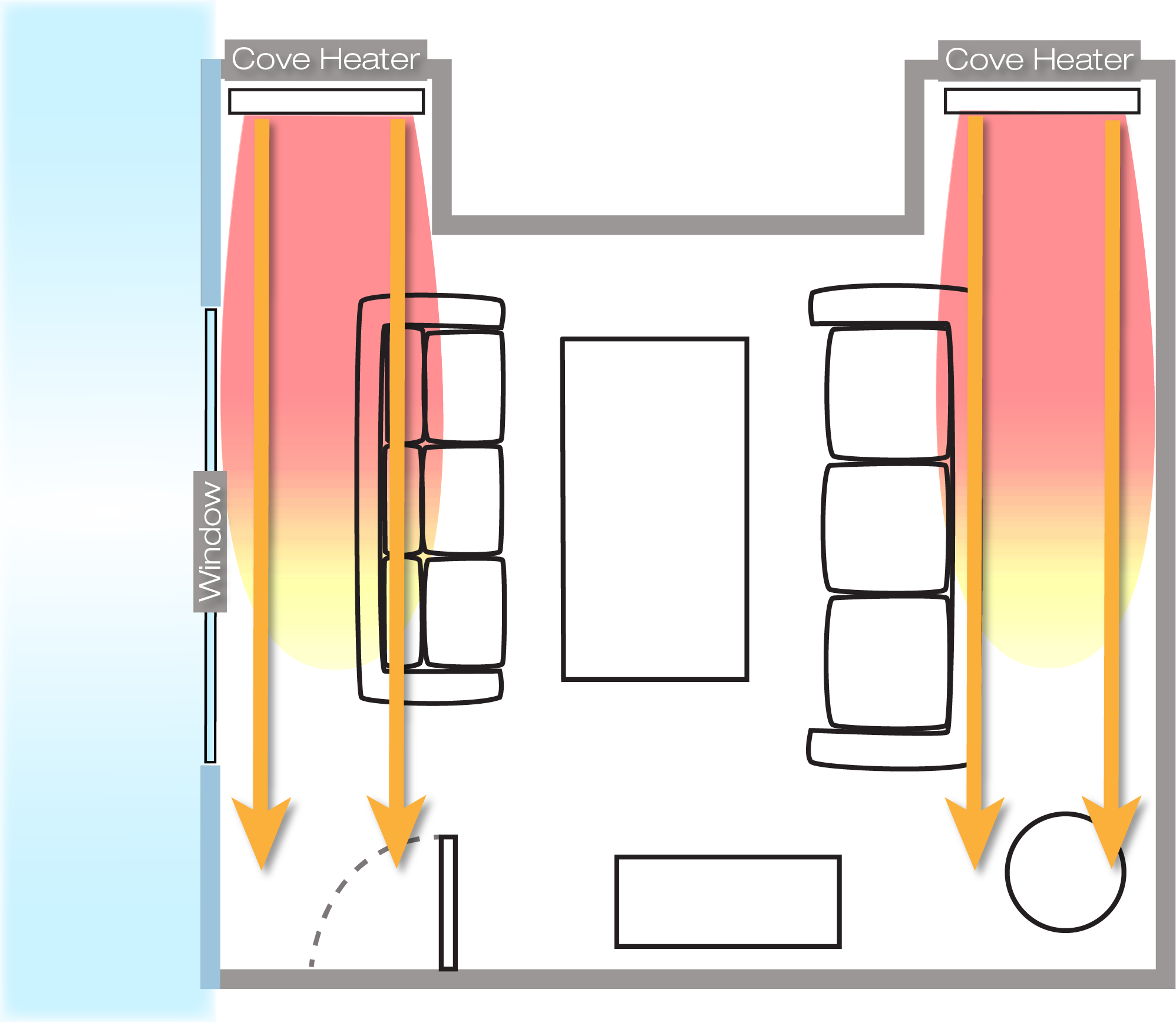
Don’t be tempted to install cove heaters in alcoves to keep the heaters out of the way. As you can see from the above image, the surrounding walls are preventing the cove heaters from providing their fullest spread of heat, so even though they are pointed toward key seating areas, it’s the alcove walls that are feeling the most benefit rather than the main living space. The great benefit of cove heaters is that they don’t monopolize room space in the way that conventional fan forced or Baseboard wall heaters do, so there’s no need to keep them in an out-of-the-way location. In fact, their unusual designs and modern aesthetic can allow them to function as an eye-catching room feature in and of themselves.
Not Recommended – Installing Opposite Windows
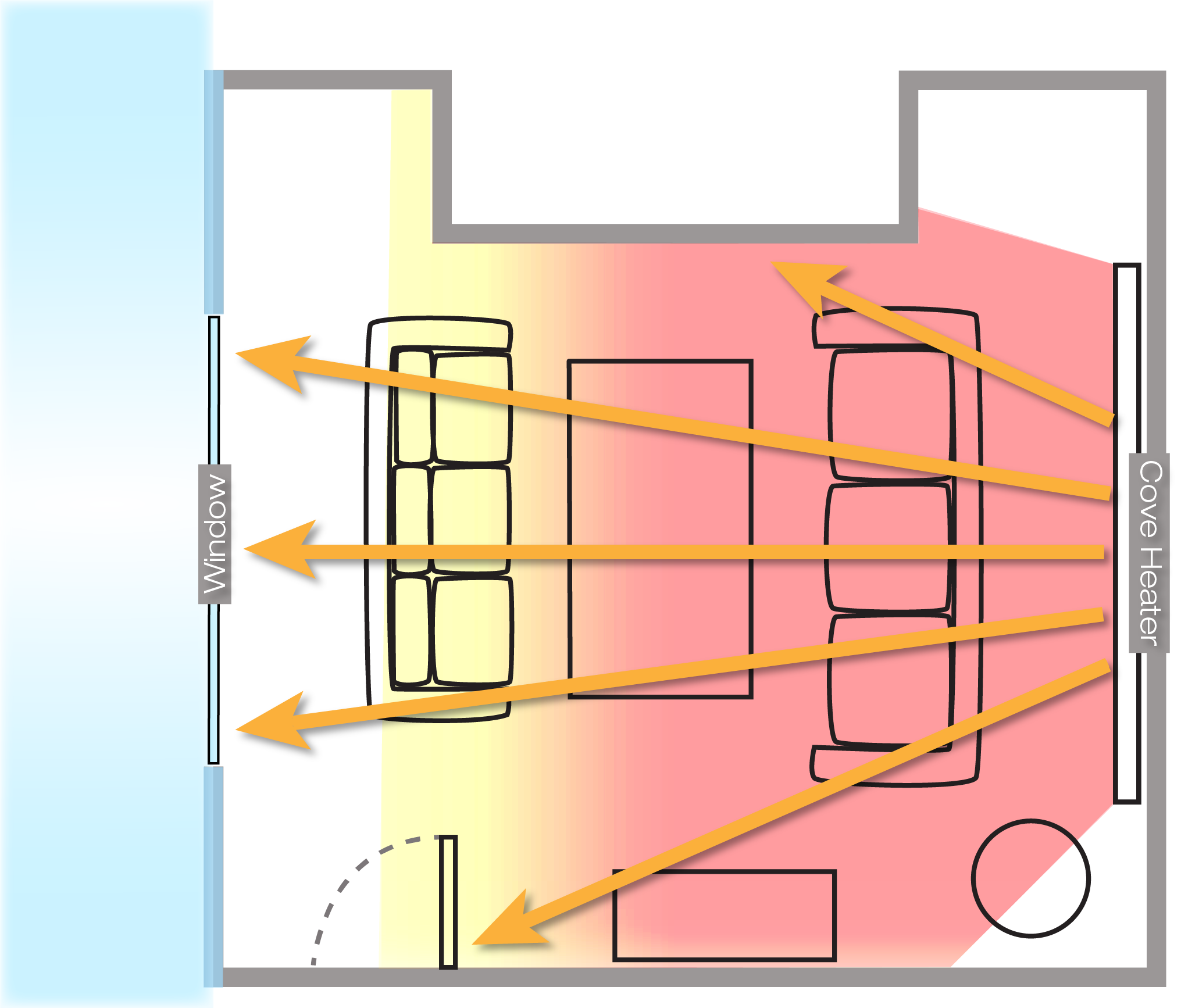
In the above image, a larger cove heater is placed on the wall above the sofa and is pointing toward the large window on the outside wall. The cover heater has more freedom to spread its heat and will cover a much greater area of the room but this positioning does have its drawbacks. Less heat will reach the sofa furthest from the wall, creating a greater disparity in temperature between the two seating areas. Furthermore, there are some schools of thought that advise against positioning cove heaters toward widows.
Heat loss though windows does not occur in the way you might expect: the longer wavelengths of far infrared are actually unable to pass through glass in the same way visible light does, so in this respect, the heat will be contained within the room. Heat loss occurs as the glass absorbs the far infrared radiation, which then conducts through the glazing and is emitted outside. As glazing doesn’t offer the same levels of insulation as a brick wall, heat can be lost more quickly in comparison.
Best Locations for Cove Heaters – Option 1
On outside walls, above the windows.
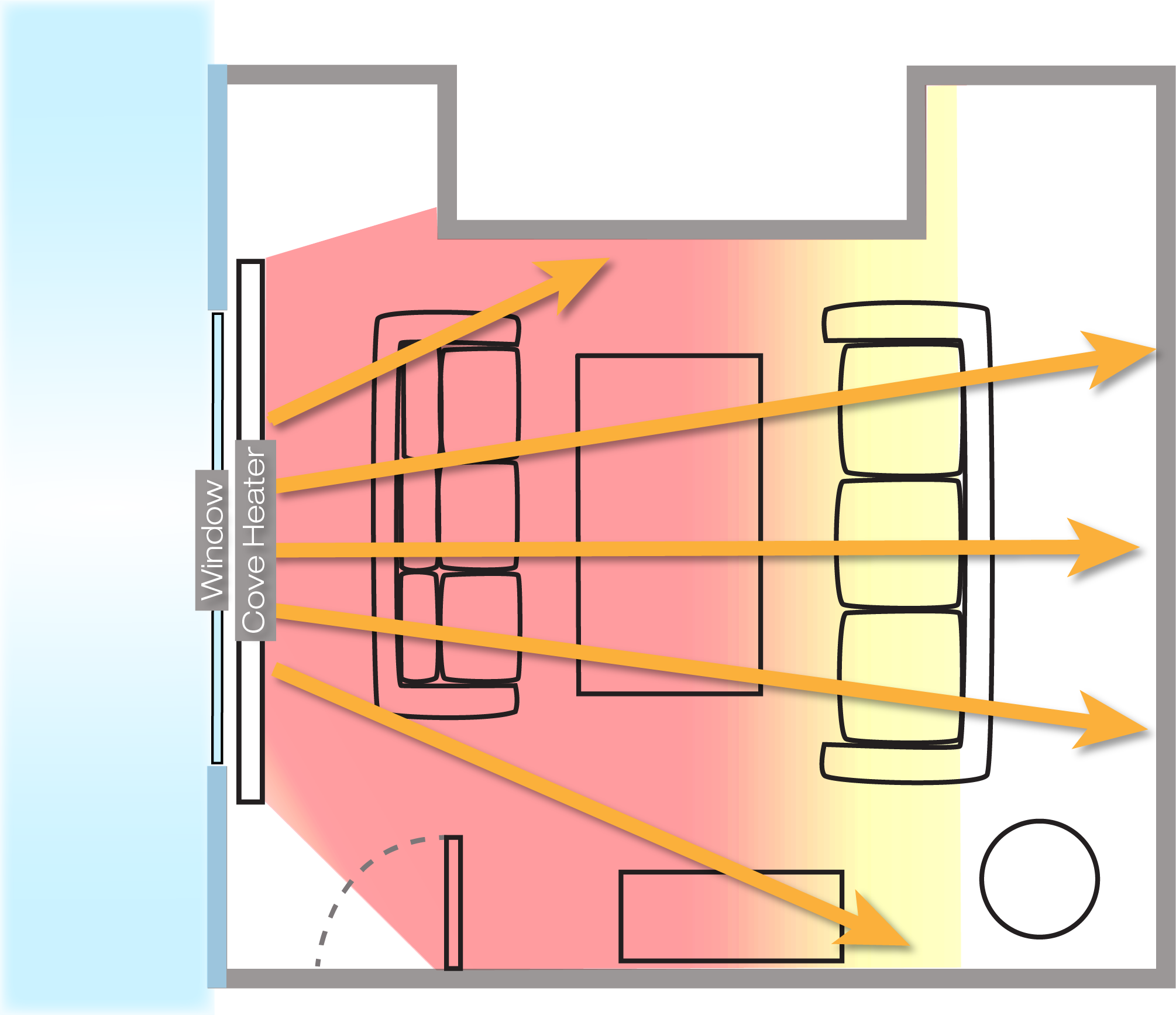
In a typical room with windows, the rule of thumb is to place cove heaters above any windows on the outside wall, as the windows are the biggest contributor to heat loss in any living space, combatting this cold air intrusions should be the primary objective. Especially if the windows are older, single pane style the heat loss can be significant. The convection currents of heated air from the cove heater takes care of most of the heat loss first and then the radiant heat, heats objects in the room much like the sun. All in all, it is best to place the heaters above the windows pointing into the room.
Best Locations for Cove Heaters – Option 2
On a side wall offering the most coverage of the living area.
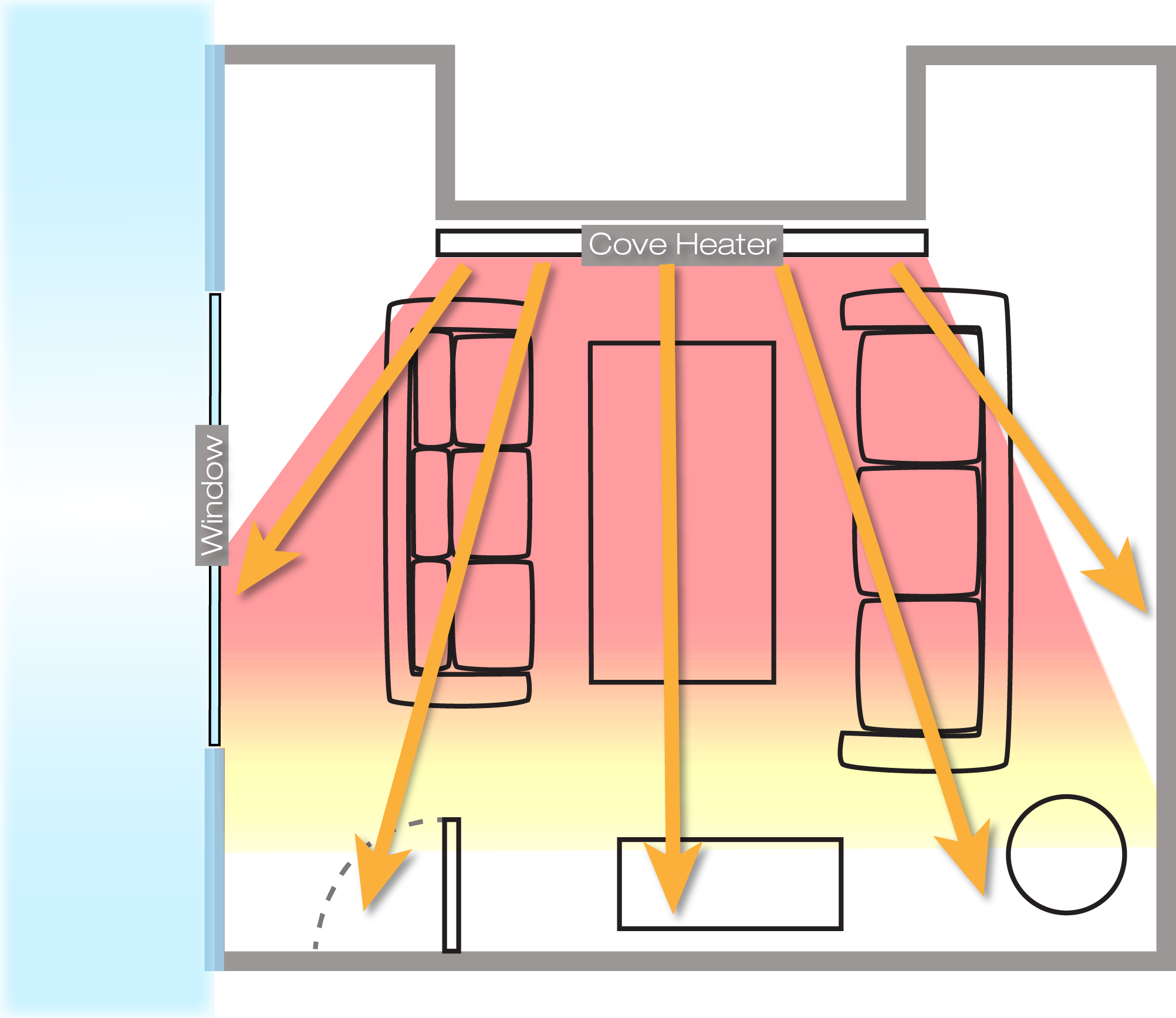
Mounting the cove heater onto the face of the chimney could be the second best option for this particular room, as the main living area will receive the lion’s share of the radiant warmth while directing the remainder into the room at the same time. In this example, less heat is also used on the little occupied space around the door and the bookcase.
Best Locations for Cove Heaters – Option 3
On the opposite side wall.
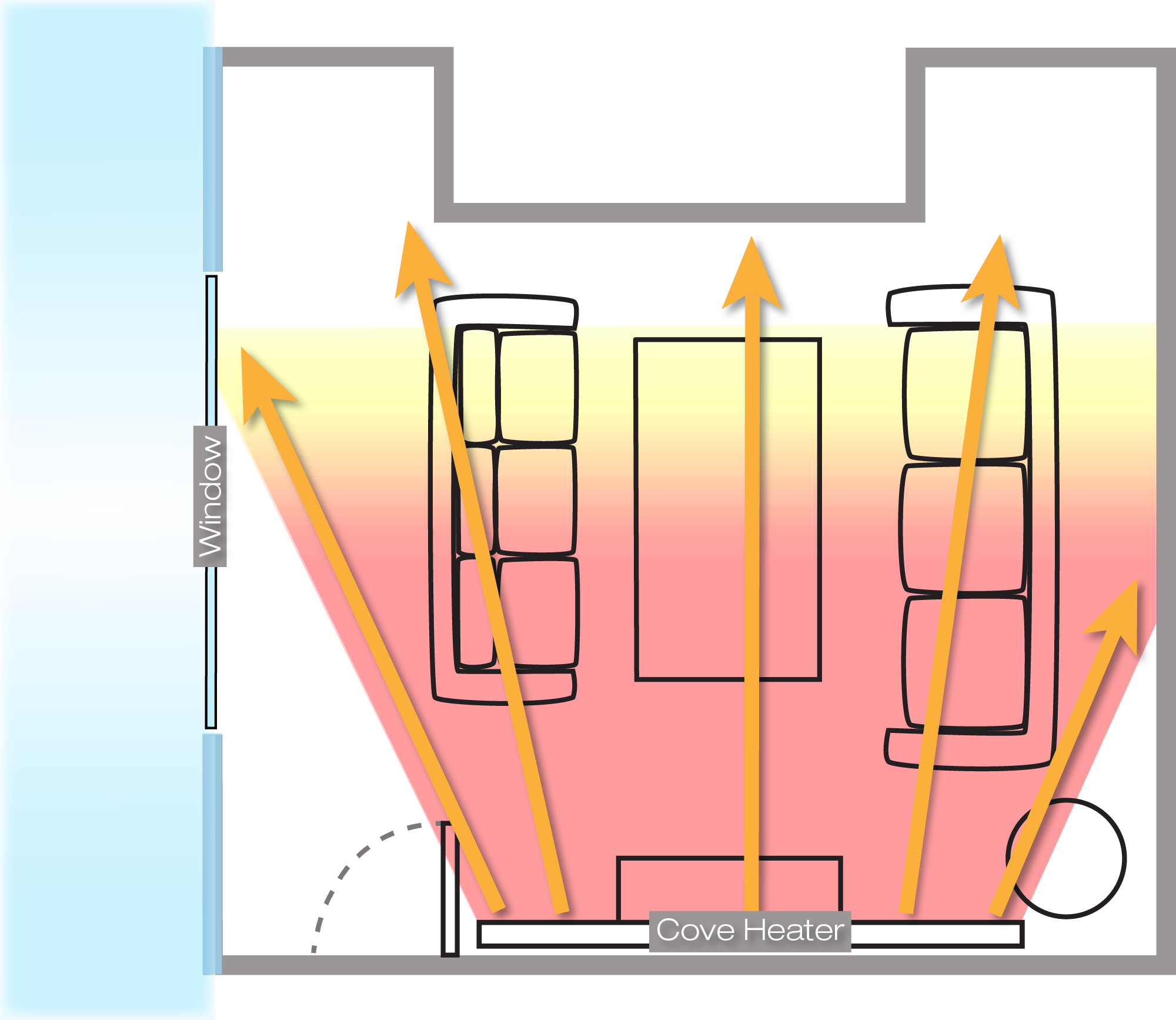
Mounting the cove heater onto the face of the chimney may be the best option for this particular room, as the main living area will receive the lion’s share of the radiant warmth while directing the remainder into the room at the same time. In this model, less heat is also used on the little occupied space around the door and the bookcase.